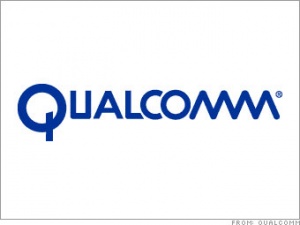Wireless Access for Health Project Works to Improve Public Health Care in the Philippines

The Philippines Department of Health, Tarlac Provincial Health Office and Qualcomm Incorporated (Nasdaq:QCOM - News), through its Wireless Reach™ initiative, today announced the successful completion of the Wireless Access for Health project’s pilot phase. The project participants leveraged their expertise and resources in public health, medical care, technology and training to create an electronic health record system that meets the needs of health care decision makers on varying levels, ranging from midwives to doctors to policy makers. Results at the conclusion of the pilot phase, which recorded over 12,000 patient consultations, indicate that such a system is not only feasible and improves patient care in rural health clinics, but also has a real impact for decision makers.
Wireless Access for Health utilizes 3G wireless technology to enable a locally developed electronic health record system. In the Philippines, local health care providers compile and report public health data to the Field Health Service Information System (FHSIS), which is the major source of data used for policy analysis and planning. The Wireless Access for Health project aims to streamline this reporting process by building on and strengthening the existing Community Health Information Tracking System (CHITS), an electronic medical record system developed by the University of the Philippines Manila. CHITS improves patient care and access to public health information by consolidating data captured during patient visits into reports for health care workers in four health units in the Tarlac region of the Philippines.
“The Wireless Access for Health project’s electronic health record system is the appropriate response to the DOH’s need for finding innovative ways of transmitting reliable health data to allow for speedier decision making and action,” said Dr. Esperanza Cabral, secretary of the Department of Health in the Philippines.
The pilot project’s results have been positive at the rural health units in Gerona, Moncada, Paniqui and Victoria. A process that previously took hours to complete, CHITS now can instantly generate all 23 of the DOH’s FHSIS reports, allowing for improved patient care and more efficient patient visits, as the time needed to search for records is reduced to just seconds. The ability to easily view, record and share patient information simultaneously across multiple computers within a health clinic allows clinicians to complete patient consultations earlier, resulting in increased capacity to provide further support to community health workers.
“Wireless Access for Health is truly beneficial for the entire public health system, from patients to doctors to health care authorities at the local, regional and national level,” stated Dr. Ricardo P. Ramos, chief of Tarlac provincial health unit. “The system’s accurate and timely submission of health data is important in helping the government to identify and prevent disease outbreaks across the Philippines.”
ADVERTISEMENT
“Good health is fundamental to our lives. The use of electronic health record systems improves patient care and public health by making it easier for health care workers to both record and report patient information,” said John Stefanac, vice president of Qualcomm and president of Qualcomm Southeast Asia and Pacific. “Qualcomm believes wireless technology ensures widespread information access, as well as enhanced mobility and efficiency, to the average citizen – regardless of where consumers are. We are proud to be a part of Wireless Access for Health and are committed to enabling wireless technology that helps keep communities in the Philippines healthy.”
In addition to the project’s direct impact on health care delivery, it has trained 40 midwives and nurses to use computers for the first time, and Tarlac State University has gained experience in CHITS software development. This increase in knowledge, experience and resources for the various levels of health care decision makers enables Wireless Access for Health to serve as a model for replication across the Tarlac region and the rest of the Philippines.
“One result of this initiative is awareness among our partners in local health offices and local government units of the importance of data quality,” said Myra Emata-Stokes, chief of The U.S. Agency for International Development’s Program Resources Management. “This initiative makes it easy for partners to realize that the natural next step to systematic health information recording is data analysis and data utilization in places where these processes have not normally existed – even at the level of the rural health units, which are the most basic point of public health service.”
“We are pleased to be part of this groundbreaking initiative. This project demonstrates that telecommunications can play an important role in modernizing the public health system, making it more effective and efficient in serving people even in remote areas of the country,” said Manuel V. Pangilinan, chairman of Smart Communications, Inc.
This project is made possible through the collaboration of public-private partners: agencies of the Philippines Department of Health, including the National Epidemiology Center, the Information Management Service and the Center for Health Development for Region 3, local government units in Tarlac, Qualcomm’s Wireless Reach initiative, RTI International, Smart Communications, Inc. (SMART), Tarlac State University, the University of the Philippines Manila-National Telehealth Center and the U.S. Agency for International Development (USAID).

